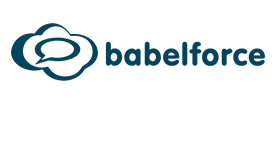The demographic shift towards an older global population will make it harder each year to secure staff. Without AI and automation, there will be no way to maintain the quality and affordability of customer service operations.

Pierce Buckley
In all the conversations about whether AI will replace jobs, few people ask the obvious question: if that happened, would it be such a bad thing?
It’s easy to come up with daunting examples of AI and automation disruption in the employment market.
- A 2019 report found that around 75,000 UK retail jobs no longer existed due to the first major wave of service automation.
- More than a third of US businesses claim that AI displaced some of their workforce in 2023.
- Uber’s rumored ambition to launch self-driving cars in every territory would cost 3.5 million drivers their jobs.
On the flip side, unemployment in most developed countries is low. Very low. It has been notoriously difficult to fill vacancies in customer service and hospitality in the post-Covid environment.
But Covid itself isn’t really the cause; it’s the spur for a challenging demographic trend which has been creeping up on us for decades.
There’s a Big Problem Coming But It’s Not AI
AI has to take jobs, because people, basically, can’t.
The global birth rate has halved since 1950. It’s already difficult to hire for customer service roles in many developed countries where English isn’t the first language. I live in Germany, and there are nowhere near enough young Germans to fill new roles.
Yes, there is a larger pool of English speakers globally. That offers some relief, but it won’t last forever; the USA, UK, and Australia are all facing tremendous population crunches of their own.
So the fearmongering about job-killing AI development is backwards. The challenge is to automate as fast as possible before the demographic problem hits us hard.
- It’s too expensive to keep hiring – the cost of hiring in a typical European call centre increased between 5 and 10% in 2022
- There aren’t enough people to hire – Global agent call capacity is still nearly 8% lower than pre-Covid levels
- Agents keep leaving – the attrition rate was 38% in 2022
Hiring Agents Will Get Harder, Not Easier
Customer service and contact centre roles combine some key vulnerabilities. Labor is a huge cost, retention is rock-bottom, and there’s widespread under-investment.
These problems are linked. I will always be the first to recommend better investments in human-centric service that boosts retention and lowers – or at least controls – costs.
But we are facing a gigantic demographic challenge. There’s no amount of hiring or retention that’s likely to solve it.
What Do Current AI Solutions Achieve?
Let’s clear something up: although I’ve been using the terms “AI” and “automation” interchangeably, they’re not the same thing.
(If it annoys you when people do this, don’t worry – it usually annoys me too.)
I’m conflating the two terms here for a simple reason. We’ll need both areas of tech running in parallel to meet our demographic crisis.
Let’s take an example from EnBW, a babelforce customer and major German utility company.
They handle around 150,000 calls per month, applying AI and automation to about 80%.
- 5% of calls never reach an agent. AI VoiceBots handle these beginning to end by recognizing, categorizing and solving customer queries.
- 20% split labor between AI VoiceBots and agents. The AI generally handles aspects like user ID and payment processing, with a warm handover to the agent.
- 55% introduce simple automation to agent-led calls. This includes gathering intent data, reducing AHT by around 35 seconds, and intelligent routing.
There’s obviously a substantial financial benefit within each of these applications. There’s also a high degree of future-proofing; with 80% of call volume incorporating AI and automation already, EnBW is far more insulated against volatility in job markets.
A Little Automation Goes a Long Way
The EnBW numbers represent what’s possible for virtually every business. 5% containment is pretty easy for any contact centre that regularly delivers account information, receives payments, or takes meter readings.
But one of the most common mistakes customer service teams make is trying to automate away their whole operation.
There is a lot more yardage in supplementing agents with automation that reduces their concurrent workload and distractions.
List every activity that agents undertake on an average day (excluding connection and empathy!) and I guarantee that platforms exist to automate them.
- IDing customers
- Bringing up CRM profiles
- Establishing intent
- Routing
- Dialing
- Entering information into tickets
- Scheduling follow-up actions and calls
All of the above are simple to do and they’re all core to how contact centres operate. We’re not talking about the relatively fringe AI use cases of sentiment analysis, predictive analytics or proactive outreach.
The solution to the immediate problem is: recognize that there are a large number of tasks that machines beat us at… and let machines do them.
When a German Airline Can’t Speak German
I recently called Lufthansa and discovered that there were no German-language agents available without a major queue.
This happens a lot. I often find that German businesses offer English-language service as their German capacity maxes out.
The reason is simple; German birth rate is low and the population is aging. It’s easier to find a worker who speaks English as a second language than one who speaks German at all.
Germany’s predicament is a preview of what the wider world will soon be dealing with.
While English-speaking countries may be among the last to feel the effects, they will feel them soon enough. 24 years ago in 2000 the median human was under 25. Today they are 32. Fast forward another 24 years into the future and the median human will be over 36.
If you don’t consider AI and automation an absolute priority in the present, you’d better have a dazzling plan for recruitment in the near future.
Written by: Pierce Buckley at babelforce.
For more information about babelforce - visit the babelforce Website
Call Centre Helper is not responsible for the content of these guest blog posts. The opinions expressed in this article are those of the author, and do not necessarily reflect those of Call Centre Helper.
Author: babelforce
Published On: 16th Jan 2024 - Last modified: 9th Dec 2024
Read more about - Guest Blogs, babelforce, Pierce Buckley






 babelforce is the composable customer experience platform uniting agents and automation.
Our platform gives you the power to create the customer experiences you’ve always wanted, with tools anyone can use.
babelforce is the composable customer experience platform uniting agents and automation.
Our platform gives you the power to create the customer experiences you’ve always wanted, with tools anyone can use. 








